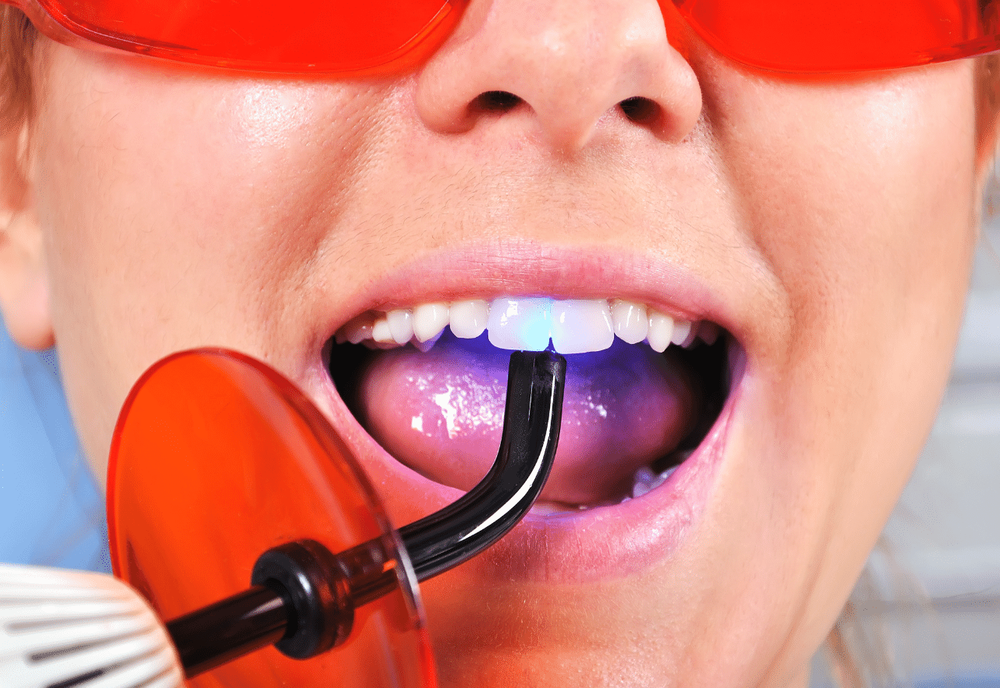Taking teeth whitening into our own hands
Lee O'Connor
20 March 2022, 6:40 AM
 The shady side of teeth whitening revealed this World Oral Health Day.
The shady side of teeth whitening revealed this World Oral Health Day.Today is World Oral Health Day (Sunday March 20) and the Australian Dental Association (ADA) say they have unmasked some home truths about teeth whitening.
A survey of 25,000 Australian adults conducted for the ADA in November and December 2021, found that 22% of us have whitened our teeth - an 8% increase since it first started recording this data in 2017.
More than twice as many women than men have teeth whitened, and it is most popular in the 24-34 year-old age group.
But as of 2021, whitening treatments done by dentists is a downward trend with only 1 in 3 adults whitening their teeth under the supervision of a dental professional.
The 2021 survey showed 19% of respondents used take-home kits while 14% opted for in-clinic whitening.
The other two thirds of Australians teeth whitened using other D-I-Y means.
- 39% bought a teeth whitening kit online,
- 16% bought an over-the-counter product like strips or gel from a pharmacy or supermarket, and
- 9% used whitening services provided by someone other than a dental professional.
All three of these methods are on the rise.
“The theme for World Oral Health Day this year is 'Be Proud of Your Mouth', and people seem to be trying to do this by undertaking cosmetic procedures to lighten their teeth,” said Dr Mark Levi, ADA spokesperson and Sydney dentist.
“The problem with home treatments that are not supervised by a dental professional or being treated by someone other than a dental professional is that you’re exposing yourself to a range of injuries including soft tissue burns from peroxide, extreme pain if the bleach gets into a crack or hole, blotchiness and damaged enamel - and even swallowing the bleach.
“A high percentage of my patients who’ve tried to whiten their teeth themselves report pain - but when done correctly, there shouldn’t be any pain.”
“People need to get their oral health assessed first to ensure there are no cracks in teeth, untreated dental decay, leaking fillings or other unresolved dental issues that could cause pain, discomfort, damaged nerve pulp - or even more serious problems down the track.”
One problem with buying off-the-shelf products is that you may not know how effective that product will be. As Emeritus Professor Laurie Walsh from UQ’s School of Dentistry reports, “the blue light sold with peroxide whitening gels speeds up the tooth whitening process by warming the gel or even better, by using special light-based chemistry."
“But there are some peroxide products on the market where the gel does not include chemicals that these lights will work on, so they’re essentially being sold as a gimmick.”
Another issue is that in some products the bleach trays are not customised to mouth shape so with a one-size-fits-all tray, peroxide from the bleach can escape and burn the mouth’s soft tissue, or worse, be ingested.
“Sometimes too high a concentration of peroxide in the bleach is used and many of the online and off-the-shelf products are unregulated so it’s a bit of a wild west and you take a chance with them as you just don’t know how well they will work,” said Dr Levi.
A further concern is that online and over-the-counter products sometimes make claims of using ‘all natural’ ingredients, which do not stand up to scrutiny - some products contain sodium chlorite, an industrial chemical also used in swimming pool cleaning.
“Whitening doesn’t alter the shade of existing fillings, veneers, crowns or artificial teeth such as dentures which are already in the mouth, yet there are no clear warnings of this lack of effect visible on sale websites or on over-the-counter products," Dr Levi said.
“The safest option recommended by the ADA is to see a dentist to assess your mouth first.”

The ADA has long held serious concerns about teeth whitening being an unregulated space and has written to the ACCC on several occasions about the availability of teeth whitening products that contain illegally high concentrations of hydrogen peroxide or carbamide peroxide which have no safety warnings, as well as concern over false advertising claims about the nature of product ingredients, the extent of the whitening effect consumers can expect, and the claimed expertise of non-dental practitioner teeth whitening service providers.
As the peak dental body, the ADA has asked that the ACCC and its regulators act to better protect Australian consumers by enforcing compliance with relevant Australian laws and educating consumers about the health risks associated with undergoing teeth whitening procedures without first seeking the advice of a dental professional.
While there are dental surgeries in many of the western plains communities, it can still be a long drive for some of our region's residents.
Figures from the Australian Institute of Health and Welfare show that in remote and very remote areas there are less than half as many full time equivalent dentists per 100,000 people as there are in the cities and this is thought to be a contributing factor in our differing attendance patterns.
Rural residents have a higher incidence of unfavourable visiting patterns (38 per cent) than urban residents (27 per cent) meaning that country people are more likely than those living in capital cities to have a problem-orientated pattern of dental attendance – we only go to the dentist when something goes wrong.
These visiting and treatment patterns increase the risk of poorer oral health in rural residents.
National health data shows 31.7% of rural residents have untreated decay compared with 24.8% of urban residents and 18.5% of rural residents have fewer than 21 teeth compared with 13.8% of urban residents.
World Oral Health Day is an annual initiative of the FDI (Federation Dentale Internationale).
The theme for 2022 is ‘Be proud of your mouth’.
The campaign aims to help reduce the burden of oral diseases which affects individuals, health systems and economies everywhere by empowering people with knowledge and the tools to pursue good oral health practices.
So whether it is teeth whitening or a checkup, find your nearest dentist and get into that chair.




